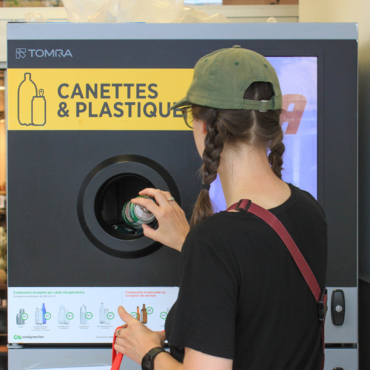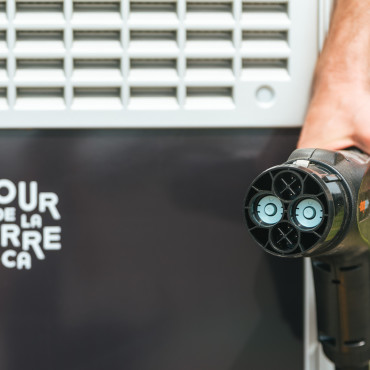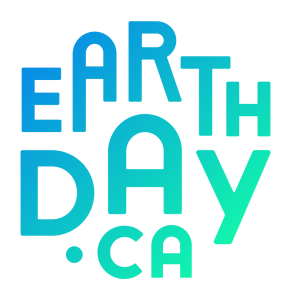Blog & News
Aiming for Action
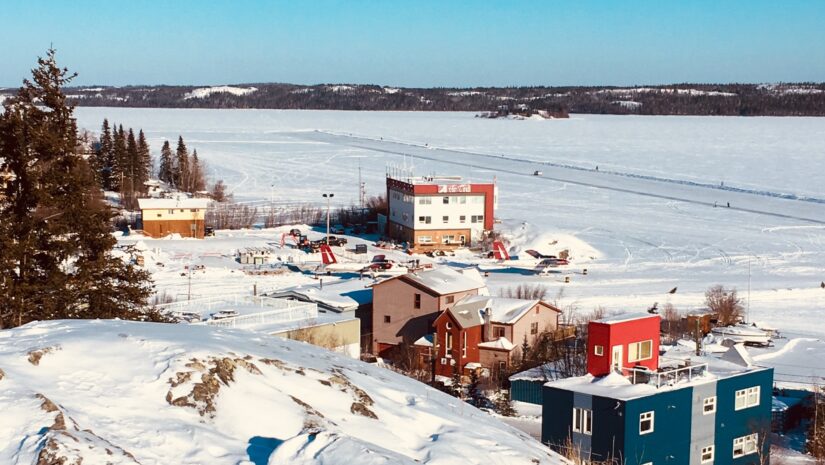
As far as I can remember, I have always been a curious person. I have tried many activities and studied many topics, so I wasn’t surprised when my love and care for nature led me to work in an environmental organization, even though I had no environmental background. I discovered that behind “environment” hid a variety of different fields, from waste management to biodiversity preservation to sustainable mobility (and more!). My professional journey led me to focus on electric mobility.
For the past year, I have been managing an electric vehicle (EV) infrastructure funding program, the Aviva Charged for Change program, which allowed me to deepen my knowledge of EVs and EV infrastructure. It also led me to learn more about First Nation, Inuit, and Métis peoples, as the program is open for application to both Canadian municipalities and Indigenous communities. The challenge (and learning opportunity) was two-fold: I had to initiate and nurture working relationships with Indigenous communities without any prior experience while learning about the reality of EV transition for Indigenous communities.
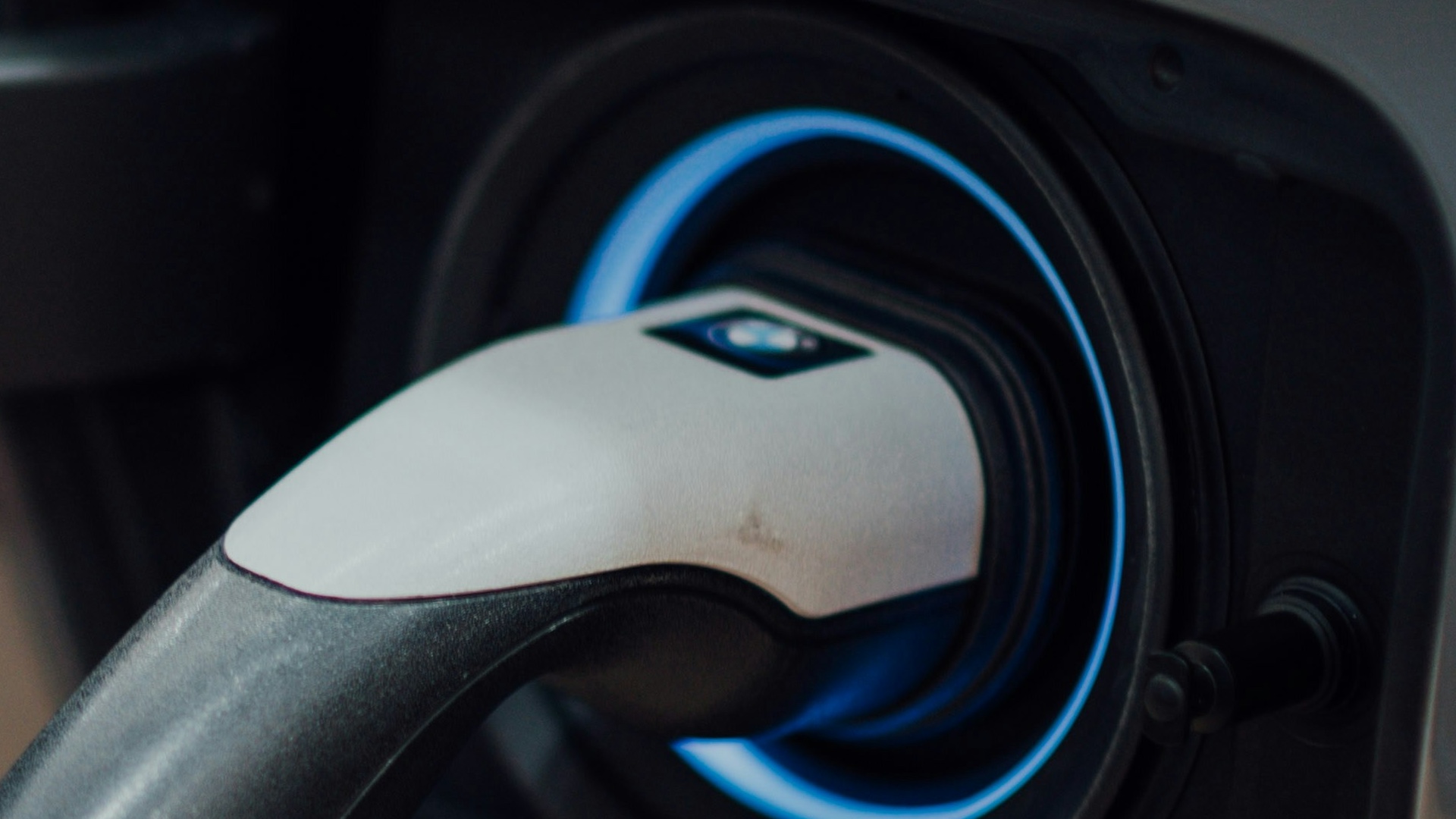
BUILDING TRUST AND LONG-TERM WORKING RELATIONSHIPS…
When I started working on the Charged for Change program, the goal was to raise awareness of the program so that municipalities and Indigenous communities could benefit from the funding opportunity. Sometimes, sending key information about a funding program in a visually appealing email is enough to spark interest and start a working relationship. And sometimes it’s not, as I’ve learned first-hand. As I was researching how to start a working relationship with Indigenous communities, a friend shared an article called “Being Good Neighbors” and even though the article was written for the tourism industry, there were many takeaways that can be applied in any professional field.
To create meaningful working relationships, trust needs to be established, and that cannot be done by using an impersonal communication tool like email. Even when more personal tools are used (like video calls where people can see each other and hear each other’s voices), trust still cannot be established if you “stick to business.” In “business meeting,” there is “business,” and there is “meeting.” And the emphasis needs to be put on “meeting.”

It is important to actually meet the person you want to build a relationship with, get to know them, exchange, share about your life, and your values, learn about the community, and ask questions. And if you can go and visit the community and make these meetings happen in person, do it! This is how trust and lasting working relationships can be established. It also means that you have to be willing to take the time to do so and maybe turn an initial 15- or 30-minute meeting into a 2-hour meeting. Taking time and slowing things down might feel out of place in the fast-paced society we live in, but the lasting positive impact is well worth a try.
… TO CREATE A SUSTAINABLE FUTURE
As I am learning about working with Indigenous communities, I am also learning about the realities and challenges of the EV transition for the communities. There is already a difference in reality between urban centers and rural municipalities. If some of the realities of Indigenous communities are similar to those of rural municipalities, others remain unique to them. Getting access to funding for an EV infrastructure project and distributing those funds promptly after project completion is a major challenge faced by both rural municipalities and Indigenous communities, which often struggle to cover costs upfront. Having funding programs that cover 100% of the project costs and/or grant partial funding early enough in the project timeline can break some of those barriers.
The remoteness of some communities poses more unique challenges, especially when it comes to broadband communication. Alternatives to technologies relying on wireless connections need to be found. Grid capacity and grid infrastructure updates are also a primary concern as they will affect the project budget and/or affect the number of EV chargers that can be included in the project. As such, it is important to start conversations with electricians early to take this into account. It is important to educate oneself about the diversity that exists among Indigenous communities, in terms of geography, customs, traditions, priorities, and needs. This can be done by actually going to the communities and having in-person meetings, as mentioned above

Supporting Indigenous communities in the EV transition goes beyond the implementation of EV infrastructure to foster the uptake of EVs. It is also about supporting communities and their residents as they build capacity to take on this transition. This is accomplished by providing information about EVs and their infrastructure, training community members and organizations to address issues with the infrastructure as they arise, and by mentoring the youth and supporting them in acquiring skills in a developing field. If you are an expert in the EV field (or if you know one) who is looking to support Indigenous communities more socially, you may be interested in becoming a mentor in one of the programs offered by the capacity-building organization Indigenous Clean Energy.
IT’S ONLY THE BEGINNING
I’m grateful for the learnings I’ve had. I feel better equipped to support Indigenous communities in their projects as a project manager of an EV infrastructure funding program. I also know that it is a drop in the ocean of learning still left to do, and I am looking forward to the challenge. I hope this article sparked your curiosity too and that you’ll continue to learn more.
RESOURCES
“‘Being Good Neighbors’: Methods of Indigenous Consultation for Resource-based Research – Moving from tokenism to relationship building in the ‘duty to consult’ for resource-based developments, a case study of tourism in Northern Ontario,” Indigenous Tourism Ontario and Lakehead University, July 2019: https://www.dropbox.com/scl/fi/3il4sv3bl1wuf2a8ztlbu/ITO-SSHRC-IRC-Position-Paper-Final-2019.pdf?rlkey=47f1o1yfqsaodp44h5ou0ar69&dl=0
“Boosting Uptake in Indigenous Communities | EV Charging National Discussion Series 2023,” Electric Autonomy Canada, December 2023: https://www.youtube.com/watch?v=HRePGR2kl_A
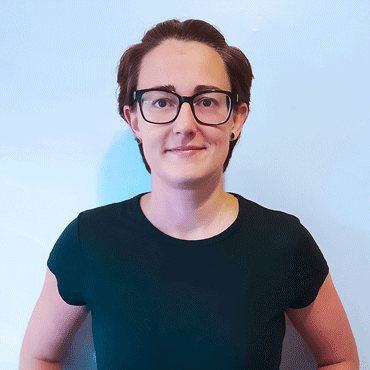
Charged for Change, Senior Project Manager
Émilie Fargeout
Always up for a bike ride or a hike, Emilie is a true explorer! Green spaces are her favourite playground. Curious and positive by nature, she recently started living a more eco-friendly way of life and will not stop there. She likes to spend time with friends around a cup of coffee or a nice meal and to recharge, a good book, podcast or movie are her go-to choices.
View all posts...Related posts :
Contact us
Earth Day Canada
5818, boulevard Saint-Laurent
Montréal (Québec) H2T 1T3 Canada
Phone : (514) 728-0116
Toll free : 1 800 424-8758
Fax : (514) 303-0248
Email: hello@earthday.ca
2025 © Earth Day Canada. All rights reserved.
Privacy policy · Terms of use · Trademark
